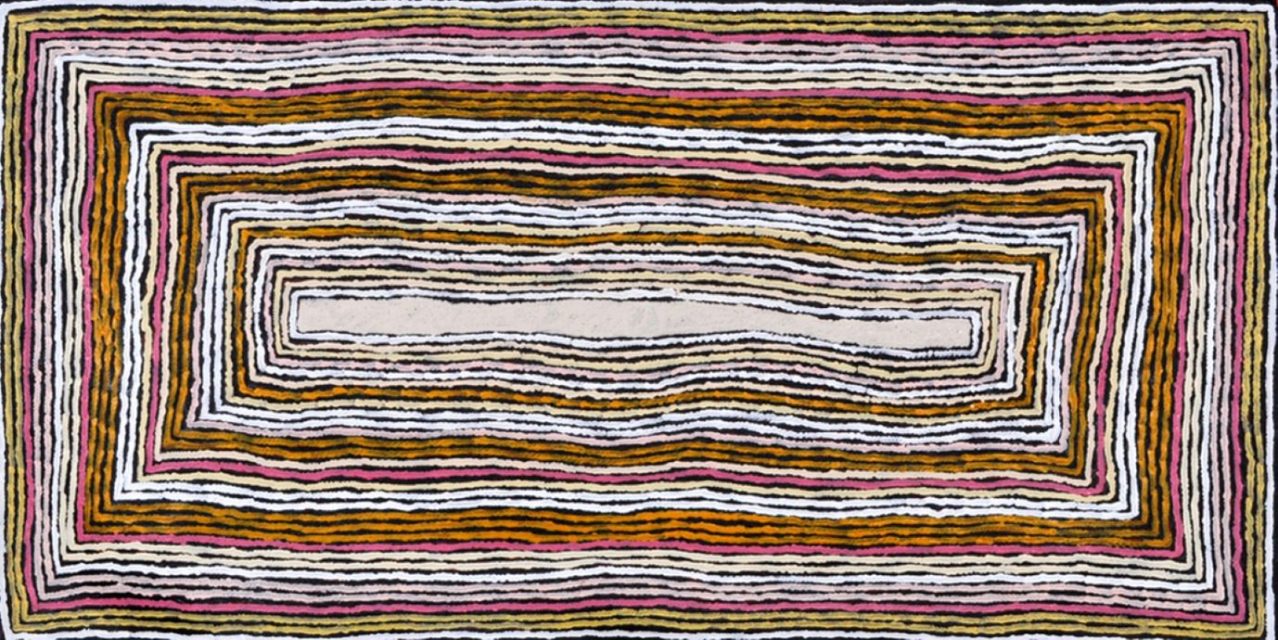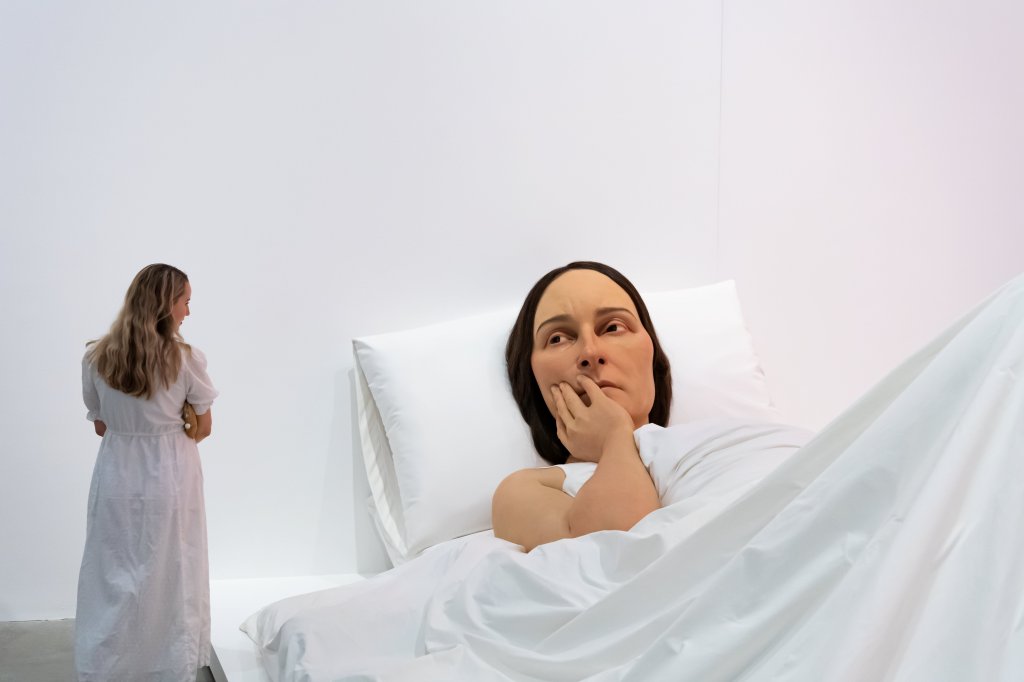Under my skin: From deserts the prophets come …
Take in the ancient wisdom of the Indigenous people of Central Australia in a remarkable exhibition celebrating 10 years in Brisbane for Mitchell Fine Arts.

It’s not often that an exhibition of lyrical Aboriginal paintings will take you into the complexities of Aboriginal kinship systems.
Napurrula, now showing at Mitchell Fine Art in Brisbane, profiles stylistically diverse paintings by Indigenous women from Central Australia, united only by their gender and their skin name.
Gallery director Mike Mitchell defines the skin name as “a cultural identity that ties them to family, clan and ancestral land”. It dictates the stories they have the right to paint. In the past, but less so in contemporary times), the skin name dictated a complex system of social order and responsibilities, including obligations to family and who you could marry.
Each of the six women included in this exhibition are Naparrula. Although they do not live in the same community, sharing this skin name means that they could have called each other sister (with four of the six having passed away).
In Aboriginal communities a skin name is assigned at birth, with its application described by academic Patrick McConvell as “sociocentric” in patterns of relationship, “a monumental achievement in the social realm of a hugely creative group of cultures on the Australian continent”.
You might like
Mitchell Fine Art celebrate 10 years in Brisbane this year. Mitchell and his wife Sharon, the gallery’s business manager, have had galleries for 20 years, previously in Alice Springs and Darwin. In opening this exhibition of vibrant paintings by women (in a celebration of International Women’s Day), Mitchell Fine Art seeks to share knowledge gained working with Indigenous artists in the Northern Territory.
“We’ve learned so much and we like to pass that on,” Sharon Mitchell says. “We’ve been privileged to spend a lot of time with Indigenous people (in Australia and Papua New Guinea) and learned about different parts of their society, stories and dreamings. If people have some knowledge, then they tend to seek out even more.”

Kay Rubuntja Napurrula, Ngapa (Water dreaming), 2010
Subscribe for updates
Paintings by Walpari woman Kay Rubuntja Napurrula (c.1969–2022) are finely dotted, each called Ngapa (Water Dreaming). One in red and white forms a detailed spiralling vortex that compels the eye.
Pintupi’s Tatali Napurrula (born 1957), in her artwork Tali (Sandhills) (Kintore), overlays organic rectangular and square shapes over lines that evoke the ripples created in large areas of sand, while Lorna Fencer Napurrula (1920-2006), also Pintupi/Walpiri, who lived in the Tanami Desert, draws out the vibrant vignettes of colour from that landscape in Luju (Caterpillar Dreaming).
Mitjili Napurrula (1945–2009) describes the distinctive shape of the acacia tree (often used for spear making) in pattern and colour creating strong visual tension in Watiya Juta.
Two works by Pintupi’s Ningura Napurrula Gibson (1938-2013) evoke her significant first-contact history. Ningura journeyed out of the Gibson Desert for the first time in 1962, before migrating with others into Papunya in 1963. After the 1998 death of her husband, Yala Yala Gibbs Tjungurrayi (a founder of the early 1970s Papunya Tula movement), her painting increased, often depicting the women’s rockhole Wirrulgna, as in the two strongly patterned paintings included in this exhibition.
Narpula Scobie Napurrula (born 1950) lives in Haasts Bluff and was one of the first women to begin painting for Papunya Tula in the early 1980s. Each of her works are called Women’s Dreaming and showcase a sinuous line and pattern that unites each canvas.
Mitchell Fine Art’s 10th anniversary sees Mitchell considering a few new initiatives.
“Aboriginal art will always be central; it was my first ‘art’ love and we have a significant inventory of work from the first generation of the contemporary art movement in central Australia,” he says.
“However, I have been building our roster of Australian contemporary artists, identifying emerging artists, and nurturing and growing those careers.
“I’m also interested in art from South-East Asia. I have curated many exhibitions overseas over the years and, while COVID brought international art fairs to a halt for us, I am looking at opportunities available now throughout Asia and the US. The future looks very positive.”
Napurrula continues at Mitchell Fine Art, Fortitude Valley, until March 15.

